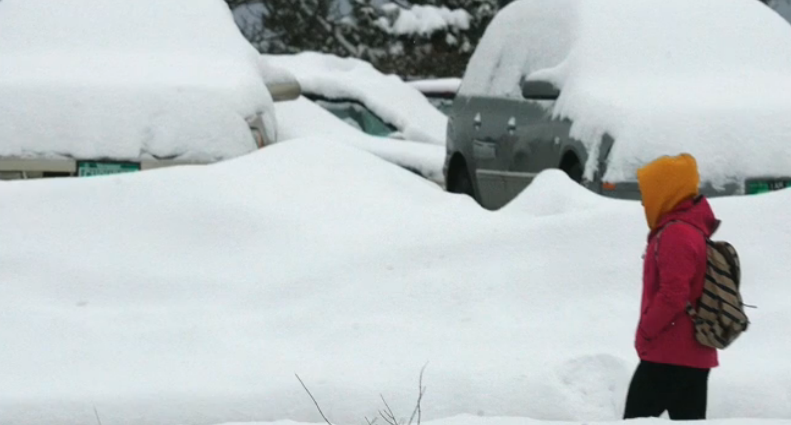FEBRUARY 17, 2015
The death of at least six people have been blamed on the
latest in a series of winter storms that have pummeled the East Coast,
and more snow is expected in the South.
Less than two months into the year, the winter storms could
cost the nation $1 billion to $2 billion, according to Planalytics, a weather
research firm for businesses.
The city of Boston reports that it has spent more than $30
million on snow removal alone.
A New York City woman was found dead in a New Hampshire
hiking area on Monday, according to the state’s fish and game department.
The woman, 32-year-old Kate Matrosova, appeared to have died
of exposure to the extreme cold, the agency said.
Over the weekend, a man in Boston died after suffering a
heart attack while shoveling snow, Boston Mayor Martin Walsh said.
Authorities in the Northeast are looking at two additional
deaths as possible weather-related cases.
In North Carolina, where 100 out of 115 school districts
were closed Tuesday, there was one weather-related death, Gov. Pat McCrory
said.
A 19-year-old woman lost control of her vehicle and crashed
in the northeastern part of the state, the governor said.
“Do not go out on the roads if you don’t need to go out on
the roads, because it’s still very dangerous,” McCrory said.
Three others lost their lives in weather-related incidents
in Tennessee, the state’s emergency management agency said.
Record Burst Pipes and Ice Dams
As we wrote in several other blogs, there is a record number of pipe bursts and water damage caused by ice dams due to the record low temperatures as well as the duration of these lows. With more days of record lows expceted dueing the next few days, be prepared for more of the same.
The water damage unfortunately will show up when we start having the thaw event. So, please be prepared and do not panic. So fix the damage (call your insurer first) and move on with your life.
Numerous Fires
The cold weather has also been a contributing factor for many fires. People trying to stay warm overuse the heating equipment and even abuse them or not using them properly. We have provided numerous blogs regarding the fire safety. Keep all combustibles at least 3 feet away from any source of heat (fireplace, heater, etc.).
Brutal cold continues
Temperatures across the eastern half of the United States
will be below average for the entire week.
Not just cold, but bitter cold was the rule in New England, where
overnight lows plunged into single digits and below zero.
In New York City, lows were in the teens.
High temperatures on Tuesday were 10 to 25 degrees below
average. An even colder blast of Arctic air is forecast to roll into the
Midwest, Southwest, Atlantic states and Northeast on Wednesday, plunging
temperatures even lower.
Snow was falling everywhere from Oklahoma to Kentucky, West
Virginia and southern Illinois, and ice caused power outages for hundreds of
thousands in the affected areas.
Eric Horst, director of the Weather Information Center at
Millersville University in central Pennsylvania, reported that his community
set three new records for low temperatures on Monday.
Winter scenes
The warnings to avoid the roads, the school closures, and
the recommendations to stay indoors have not deterred those who are out and
about from chronicling the wintry weather. Some call it #Snowmageddon2015,
others say they are “SnOverIt.”
Philly resident Christopher Benson shared with CNN’s iReport
the scene of a fire that broke out in the midst of the freezing temperatures.
He was in awe at what he saw — as firefighters battled a fire at a medical
building, the water froze, turning the structure into something that Queen Elsa
might have conjured. (No one was injured in the fire, according to local
reports).
Twitter user Paul Hewitt caught a bird’s-eye view of the
frozen Hudson River after taking off on a flight from LaGuardia Airport.
ANOTHER storm coming?
There is a new potential winter storm that might develop
late this week and into the weekend, though forecasting models are not in
agreement.
The possible storm could take shape in the middle
Mississippi, Ohio and Tennessee valleys. And it could extend farther.





.PNG)

